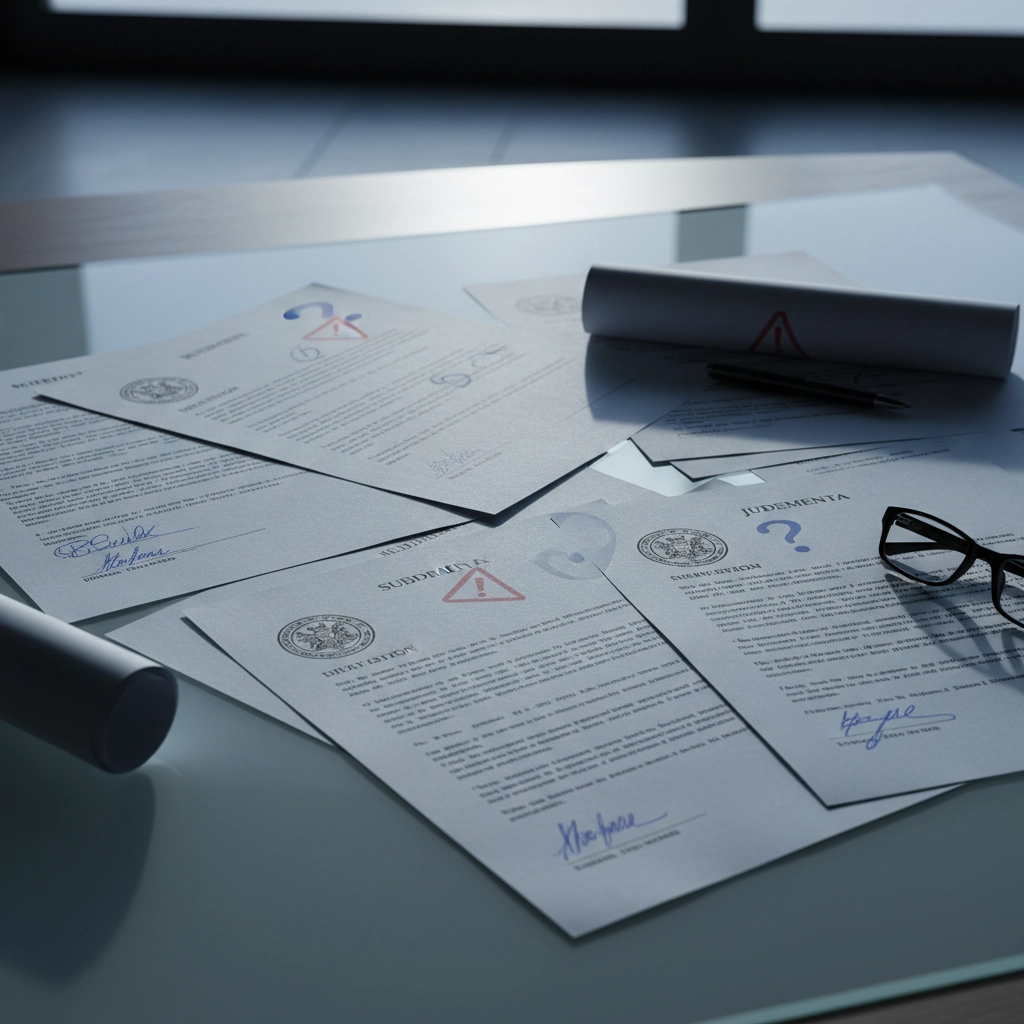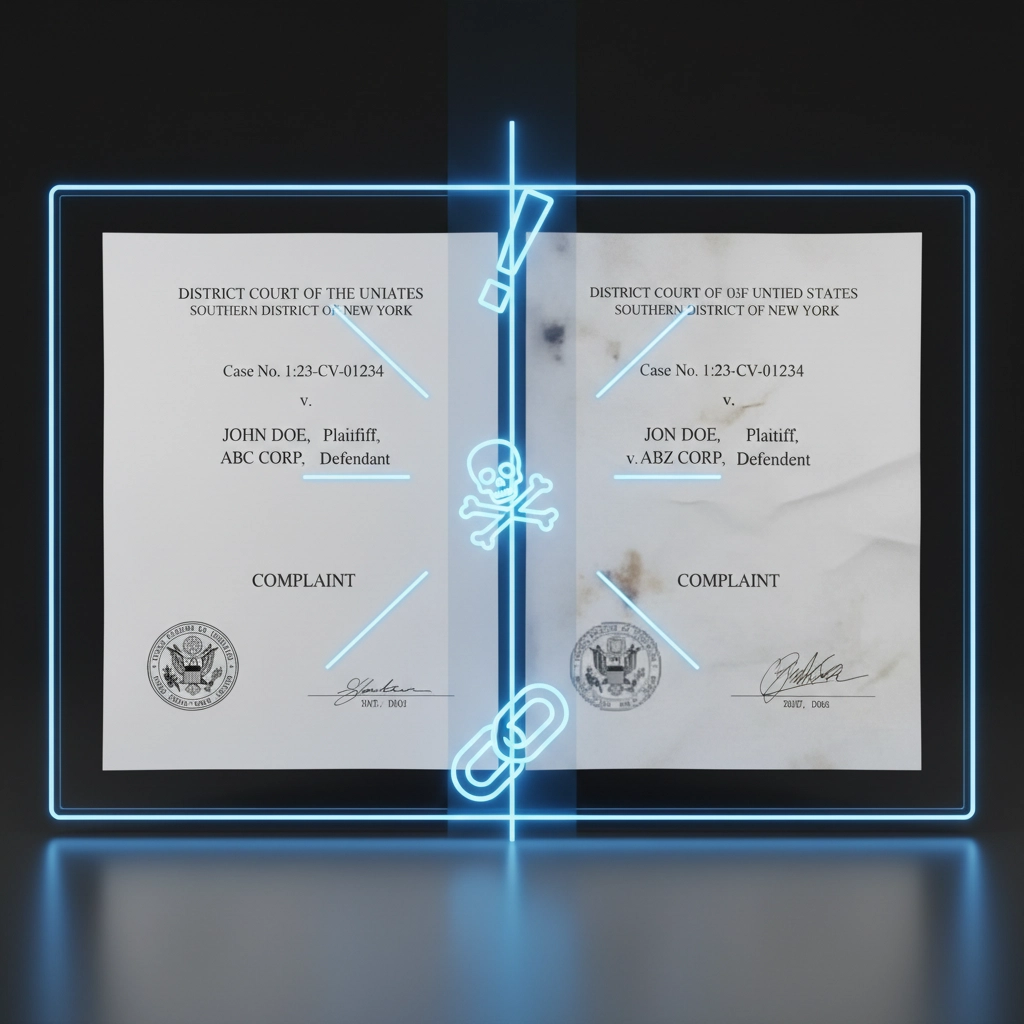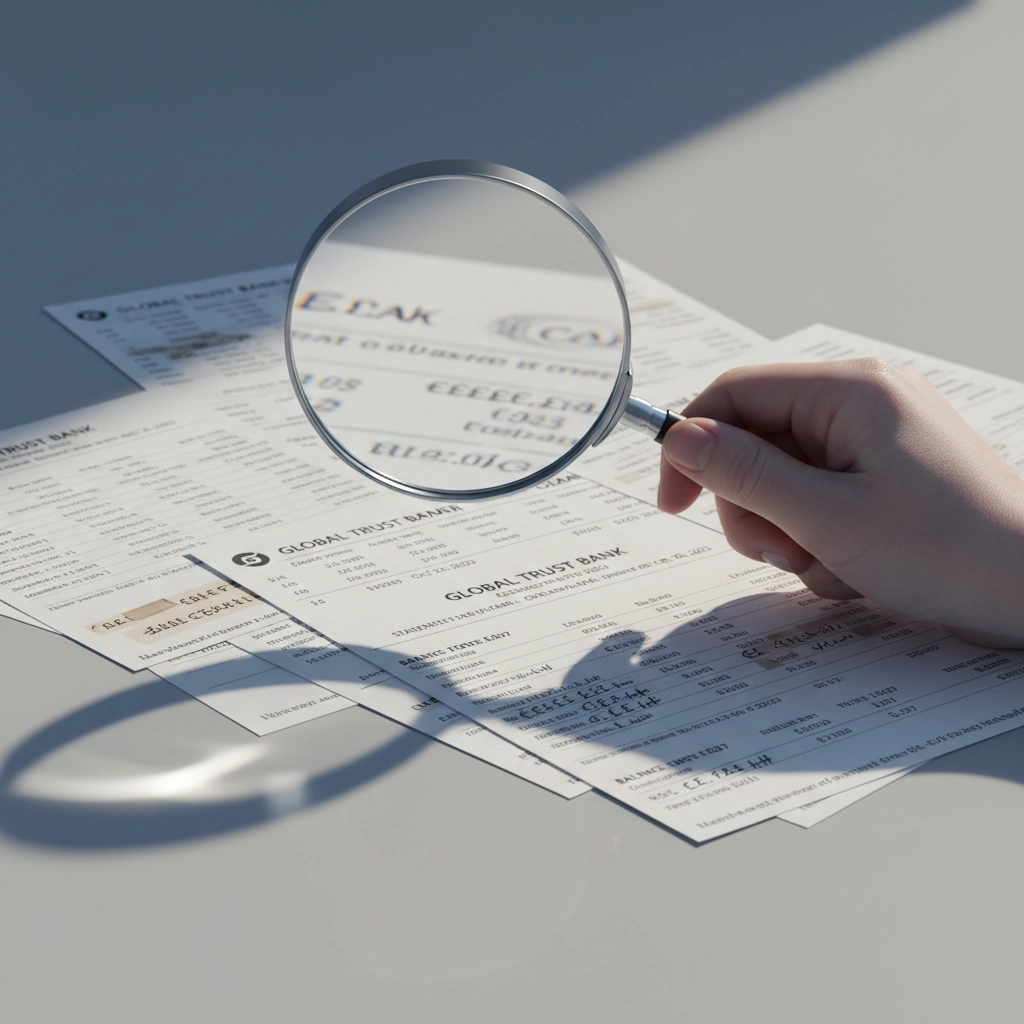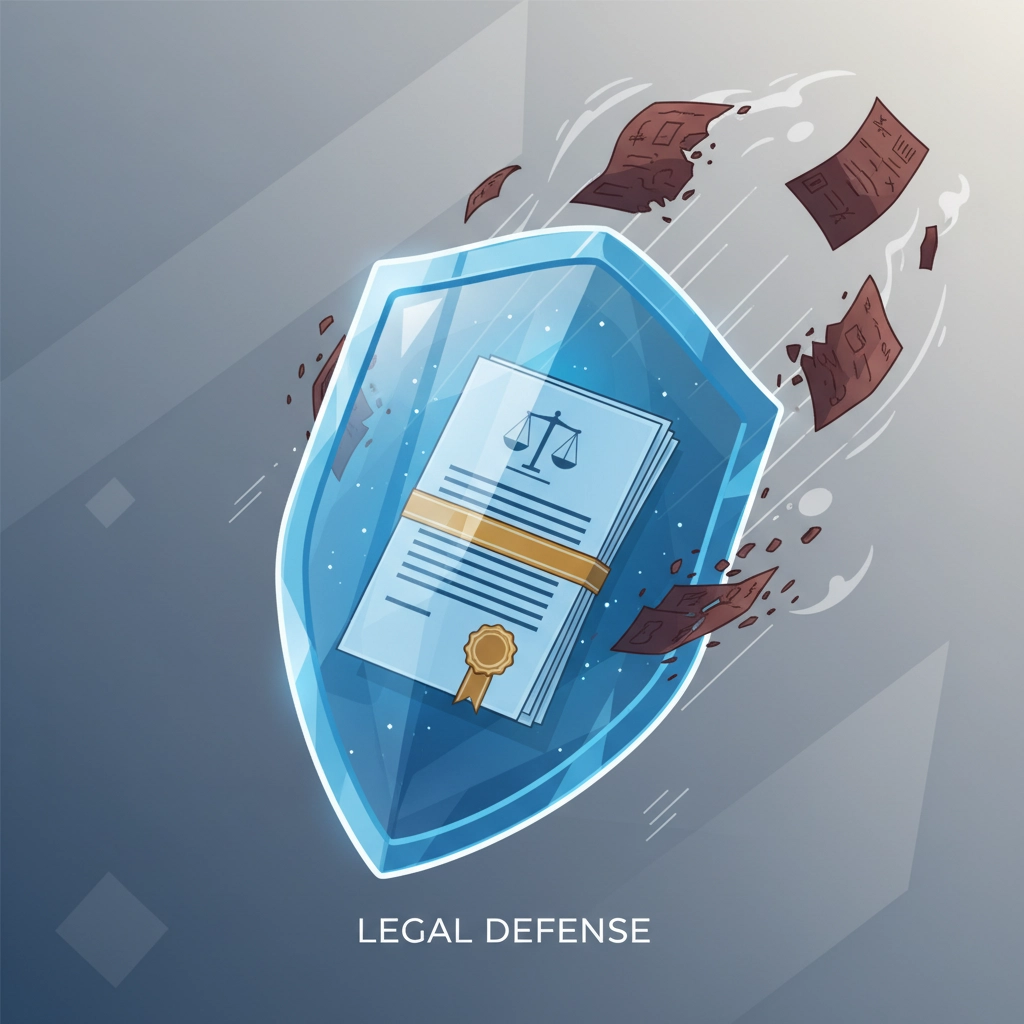Fake Divorce Papers Are Everywhere: 7 Red Flags That Could Land You in Legal Trouble
- brookthibault
- Nov 4
- 6 min read
In today's digital age, the production of fake legal documents has become alarmingly sophisticated. Fake divorce papers represent one of the most serious threats to your legal and financial security, claiming that couples are legally divorced when they actually aren't. These fraudulent documents often feature forged signatures, false court stamps, and fabricated case numbers that can derail your entire divorce process and create consequences lasting years.
Understanding how to identify fake divorce papers isn't just about protecting yourself: it's about avoiding criminal charges, financial devastation, and legal complications that could follow you for decades. Whether you're currently going through a divorce or suspect your spouse has submitted falsified documents, recognizing these red flags could save you from serious legal trouble.
What Makes Divorce Papers "Fake"?
Fake divorce papers fall into two main categories: completely fabricated documents that claim a divorce occurred when no legal proceedings ever took place, and legitimate documents that have been altered to misrepresent facts, hide assets, or manipulate financial information.
The most dangerous aspect of fake divorce papers is that they can appear legitimate at first glance. Scammers have access to professional printing equipment, official-looking seals, and detailed knowledge of court formatting that makes detection challenging without proper verification.

Falsifying divorce documents during your divorce proceedings constitutes perjury, which can involve both direct acts (explicitly lying under oath) and indirect acts (withholding crucial information). This includes everything from claiming non-existent poverty to hiding substantial assets through complex financial schemes.
The 7 Red Flags That Signal Fake Divorce Papers
1. Unusual Email Addresses and Metadata Inconsistencies
One of the most revealing signs of fraudulent divorce documents comes from their digital trail. Fake emails accompanying divorce papers often contain spelling errors, unexpected attachments, and header irregularities that don't match their supposed court source.
When forensic experts analyze these documents, they examine metadata including sender IP addresses, timestamps, and routing information. Legitimate court communications follow strict protocols and originate from verified government email domains. If you receive divorce-related documents from generic email addresses like Gmail or Yahoo, or if the sender's information doesn't match official court records, treat this as a major warning sign.
2. Inconsistent Formatting and Document Details
Court documents follow rigid formatting standards that vary by jurisdiction but remain consistent within each court system. Fake divorce certificates often contain incorrect fonts, spacing irregularities, or formatting that doesn't match the issuing court's standard template.
Pay close attention to official seals, case number formatting, and judge signatures. Scammers frequently use outdated templates or merge elements from different courts, creating documents that look official but contain subtle inconsistencies that trained legal professionals can easily identify.
3. Claims of No-Court Divorces
This red flag should trigger immediate alarm bells. In virtually every jurisdiction, obtaining a legal divorce requires some form of court appearance or filing, even in uncontested cases. If someone claims they can get you divorced without anyone appearing in court and provides you with a divorce certificate afterward, that certificate is almost certainly fake.
Legitimate divorce proceedings, even the most streamlined ones, require proper legal procedures, waiting periods, and court oversight. Be especially suspicious of services that promise "instant divorces" or "no-court-required" solutions.

4. Pressure to Act Quickly
Fraudsters often create artificial urgency to prevent you from thoroughly examining documents or seeking professional legal advice. They might claim that court deadlines are approaching, that special rates are expiring, or that immediate action is required to protect your interests.
Legitimate legal proceedings operate on established timelines with built-in protections for both parties. While some legal situations do require prompt attention, any service pressuring you to sign documents immediately or pay fees urgently should be viewed with extreme skepticism.
5. Hidden Assets Through Third Parties
During divorce proceedings, one spouse might attempt to conceal assets by transferring them to friends, family members, or business associates temporarily. This creates fake divorce papers that severely underrepresent the actual marital estate.
Watch for sudden transfers of property, vehicles, or financial accounts to third parties just before or during divorce proceedings. Similarly, be alert to claims of business partnerships or debts that conveniently reduce the apparent value of marital assets. These tactics often involve falsified documentation to support the deception.
6. Falsified Bank Statements and Financial Records
Doctored financial records represent one of the most common forms of divorce document fraud. Spouses might submit altered bank statements showing lower balances, modified pay stubs reflecting reduced income, or fabricated debt documentation to manipulate support calculations.
Modern technology makes creating convincing fake financial documents relatively easy, but forensic accountants can detect these alterations through various methods. Discrepancies in font consistency, mathematical errors in calculated totals, or statements that don't align with known spending patterns often reveal fraud.
7. Undervalued Property and Asset Claims
When divorce papers claim that valuable assets are worth significantly less than their obvious market value, this represents a clear red flag. This might involve professional appraisals from questionable sources, claims that valuable items are damaged or non-functional, or assertions that assets have been sold for far below market rates.
Real estate, vehicles, jewelry, art, and business interests are commonly undervalued in fraudulent divorce documents. Cross-reference claimed values with recent market data, previous insurance appraisals, or independent professional assessments to identify potential fraud.
Serious Legal Consequences You Face
The penalties for involvement with fake divorce papers extend far beyond simple embarrassment. If a court determines that you've falsified documents during divorce proceedings, you could face both civil and criminal consequences.
Civil penalties typically include paying all court costs for both parties, covering your spouse's legal fees, and returning any assets that were dissipated or hidden during the proceedings. These financial penalties can easily reach tens of thousands of dollars, even in modest divorce cases.

Criminal charges represent the more serious threat. Falsifying bank statements, creating fake appraisals, or submitting forged documents can result in fraud, forgery, or perjury charges. These felonies can carry significant prison time, substantial fines, and permanent criminal records that affect employment, housing, and professional licensing opportunities.
Beyond immediate penalties, fake divorce papers undermine the court's authority and compromise the validity of any rulings made based on fraudulent information. This can lead to cases being reopened years later, creating ongoing legal complications and expenses.
Protecting Yourself from Divorce Document Fraud
If you suspect your spouse has submitted falsified documents, immediate action is essential. Don't attempt to handle this situation alone: consult with an experienced divorce attorney who can properly evaluate the evidence and guide you through the legal process.
Start by compiling evidence that supports your suspicions. This includes original documents, previous financial statements, correspondence, and any other materials that contradict the questionable documents. Keep detailed records of all communications and maintain copies of everything in secure locations.
File a formal motion with the court presenting your evidence and requesting sanctions against your spouse. This legal filing puts the court on notice about potential fraud and provides a pathway for addressing the situation through proper legal channels.
When receiving any divorce-related documents, always verify their authenticity through official court records. Request certified copies directly from the court clerk rather than accepting copies from your spouse or their attorney. This simple step can save you from accepting fraudulent documents as legitimate.

Be particularly cautious with documents that appear to be finalized without your direct participation in court proceedings. Even in uncontested divorces, both parties typically must sign acknowledgments or appear before court officials at some point in the process.
When Professional Legal Help Becomes Essential
The complexity of modern divorce fraud requires professional expertise to navigate safely. If you're dealing with suspected fake divorce papers, attempting to resolve the situation without qualified legal representation often leads to additional complications and expenses.
An experienced attorney can coordinate with forensic accountants, document experts, and other specialists to build a comprehensive case addressing the fraud. They understand the procedural requirements for challenging fraudulent documents and can guide you through the process while protecting your interests.
Remember that detecting and proving document fraud requires specialized knowledge and resources that most individuals don't possess. The sooner you seek professional help, the better your chances of minimizing damage and protecting your legal rights.
The stakes in divorce proceedings are simply too high to risk accepting potentially fraudulent documents or attempting to navigate complex fraud allegations without proper legal support. When your financial future and legal standing are at risk, professional guidance isn't just helpful: it's essential for protecting everything you've worked to build.




Comments